The content of the article
Acne and black spots, especially on the face, are one of the most annoying problems. I want to get rid of acne immediately, especially if they appear unexpectedly before important events. To do this, many resort to an emergency method and squeeze acne, hoping that this will help their speedy healing.
However, in many cases, such a radical method can not only not help, but also harm: a pimple with a high degree of probability can become inflamed, and its treatment will require more time and money. Before making a decision, it is necessary to find out the cause of the appearance of rashes and to deal with them comprehensively.
How do acne appear?
The mechanism of the appearance of acne is a blockage of the ducts of the sebaceous glands or the mouths of the hair follicles with fat and keratinized scales of skin cells. Squeezing acne is fraught with infection in such glands, due to which pus forms in them. Over time, it “breaks through” the epidermis and goes outside, while if the abscess was large, a scar is likely to form on the site of the acne.
Distinguishing acne that has already been infected is quite simple. All of them are divided into two types - non-inflammatory and inflammatory. Non-inflammatory acne include:
- Black dots. They appear when the upper part of the pore is blocked. These acne is "open", there is no epidermis on them. The black color is due to the oxidation of fat under the influence of oxygen.
- Whiteheads. Formed in the lower part of the pore, under the skin. Such acne can rise above the skin or just be felt, but there is no way to squeeze it out.
With acne inflammation, papules (nodules) or pustules (abscesses) can form.
Nodules, as a rule, appear in place of black dots and represent a formation with a diameter of up to 3 millimeters, which can be confused with a mole. Suppuration in the form of a white inflamed head, like an abscess, on the nodule is not noticeable.
Pustules, in turn, can form independently or in place of nodules and reach a diameter of up to 10 millimeters. The contents of the abscesses are white, yellow, greenish or gray. When they occur, the walls of the vessels can collapse due to infection, then blood enters the pus.
In addition, a number of diseases can become the cause of rashes, for example, skin tuberculosis, drug rash, various types of dermatitis, rosacea and others. To get rid of acne, it is often necessary to consult not only a dermatologist, but also an allergist, endocrinologist, gynecologist, gastroenterologist and other specialists.
The opinion of doctors
The most important thing is the danger of infections, which, when ingested through an squeezed pimple, will not only lead to a new rash, but can also cause serious illness.
It is believed that the most dangerous part of the face in this regard is the nasolabial triangle. In this area there are many vessels that directly feed the brain. The introduction of infection into the blood in this case is fraught with serious consequences, up to death.Among the most dangerous infections that it is possible to enter the body through squeezed acne - staphylococcus, there is a likelihood of developing meningitis and encephalitis.
In addition, it must be remembered that with a mechanical effect on the abscess, its contents can not only go outside, but, conversely, get into the tissues, which will lead to inflammation. In this case, a permanent seal is likely to form at the site of the acne, which is not so easy to get rid of.
Beauticians position
Modern cosmetologists also do not recommend squeezing acne on their own, but allow the possibility of a professional procedure - face cleansing. In a specialized office, using professional equipment and disinfectants, the risk of infection, in fact, is reduced. However, there are several types of cleanings on the service market that differ in terms of efficiency and degree of safety.
- Mechanical cleaning. This type is considered one of the most effective, but its safety depends on the specific salon and the responsibility of the cosmetologist. With mechanical cleaning, acne is squeezed out manually, as well as using a cosmetic loop and a Vidal needle. Ideally, a specialist should use disposable gloves and sterile wipes, and the loop and needle must be sanitized, not just rinsed. The skin must first be steamed, and after the procedure, apply sedatives to the skin.
- Vacuum cleaning. For its use, special equipment with a nozzle is used, in which air is pumped under negative pressure - thus the acne content is sucked out.
- Ultrasonic cleaning. Unlike the previous ones, ultrasonic cleaning affects only the surface layers of the skin, so it can be ineffective to deal with large acne. Disincrustants are previously applied to the skin - special cosmetics based on acids. Their goal is to disrupt the structure of acne, which is then cleaned under the influence of an ultrasound apparatus that causes high-frequency vibrations.
- Dry cleaning. This type of cleaning is carried out with minimal physical impact on the skin. The face is applied with products that contain either acids or enzymes. Both types of drugs clean the surface layers of the skin and contribute to the narrowing of pores.
Despite the popularity of various types of cleansing, all procedures have a number of side effects. Common contraindications for all are herpes, diabetes mellitus, asthma, eczema, severe stages of hypertension, as well as epilepsy.
Mechanical and vacuum cleaning cause serious damage to the skin, crusts often form on the sites of squeezed acne, and rosacea and small bruises can occur. Skin restoration usually takes at least three days.
Chemical and ultrasonic cleansing do not guarantee a good result in the fight against large and “deep” acne, in addition, chemicals can cause an allergic reaction to the skin.
Experts do not recommend being in direct sunlight for a long time after cleaning, as well as using decorative cosmetics.
Danger of make-up after squeezing out the drawers
In addition to serious medical problems that can be caused by squeezing acne, you need to remember about aesthetic. The main ones include the appearance of scars and rosacea. Scars are formed not only in places of large acne: their appearance is caused by the removal of the “crust”, which eventually closes the previously inflamed pore. Cuperosis, that is, the appearance of a vascular network that arose due to injury to blood vessels under mechanical stress, will have to be removed using professional procedures, for example, laser therapy. Moreover, one hundred percent result in the fight against rosacea is not guaranteed.
If the desire to squeeze out a pimple, despite the categorical opinion of specialists about the inefficiency and danger of this method of combating a rash, is irresistible, a number of rules must be observed:
- sanitize hands and face,
- use sterile wipes
- steam the skin before the procedure, which will make it less traumatic,
- use soothing cosmetics and medicines that accelerate skin regeneration.
Video: how to stop crushing acne

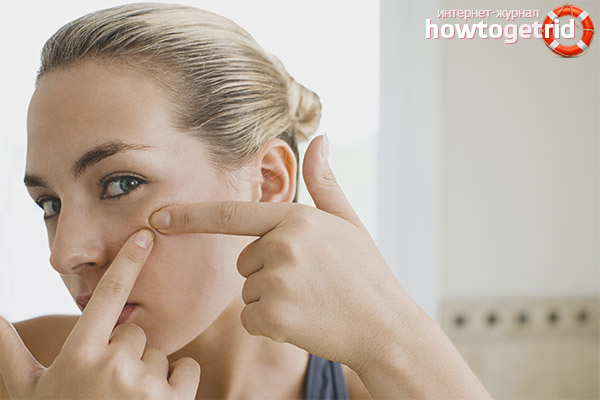




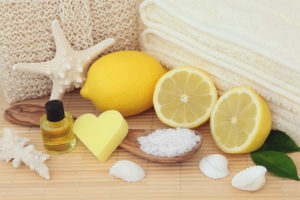
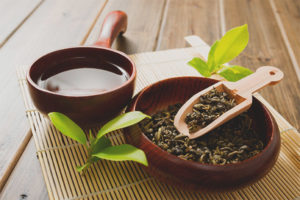
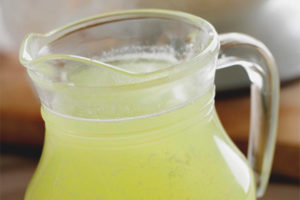
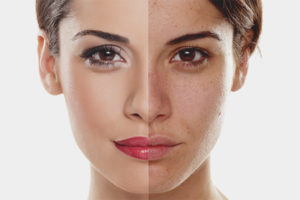
Submit